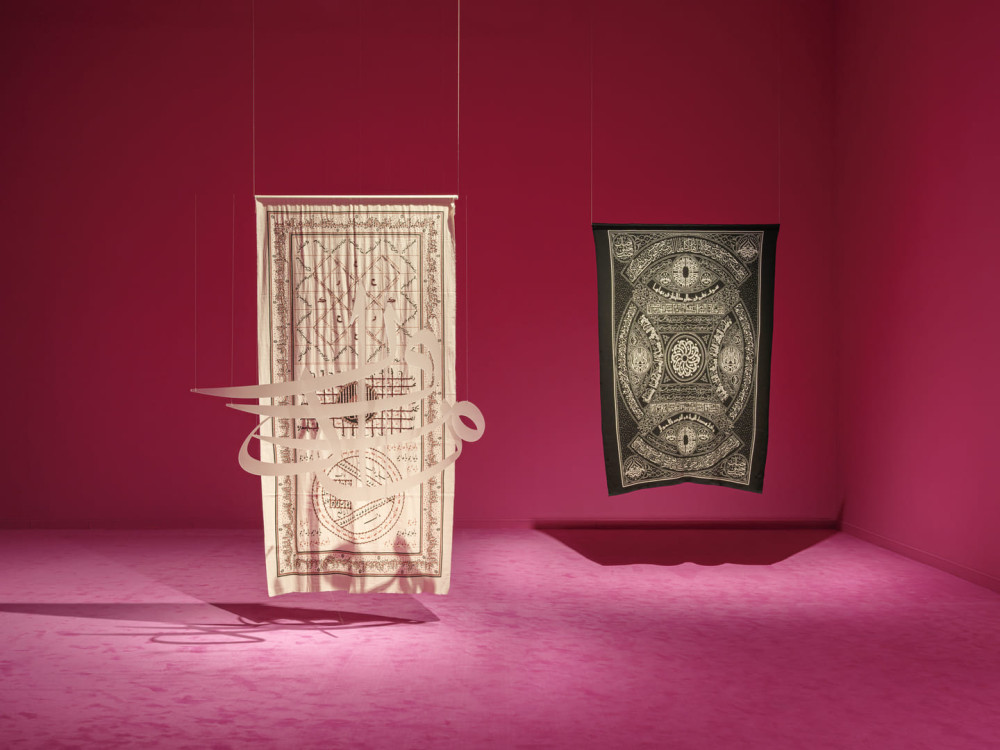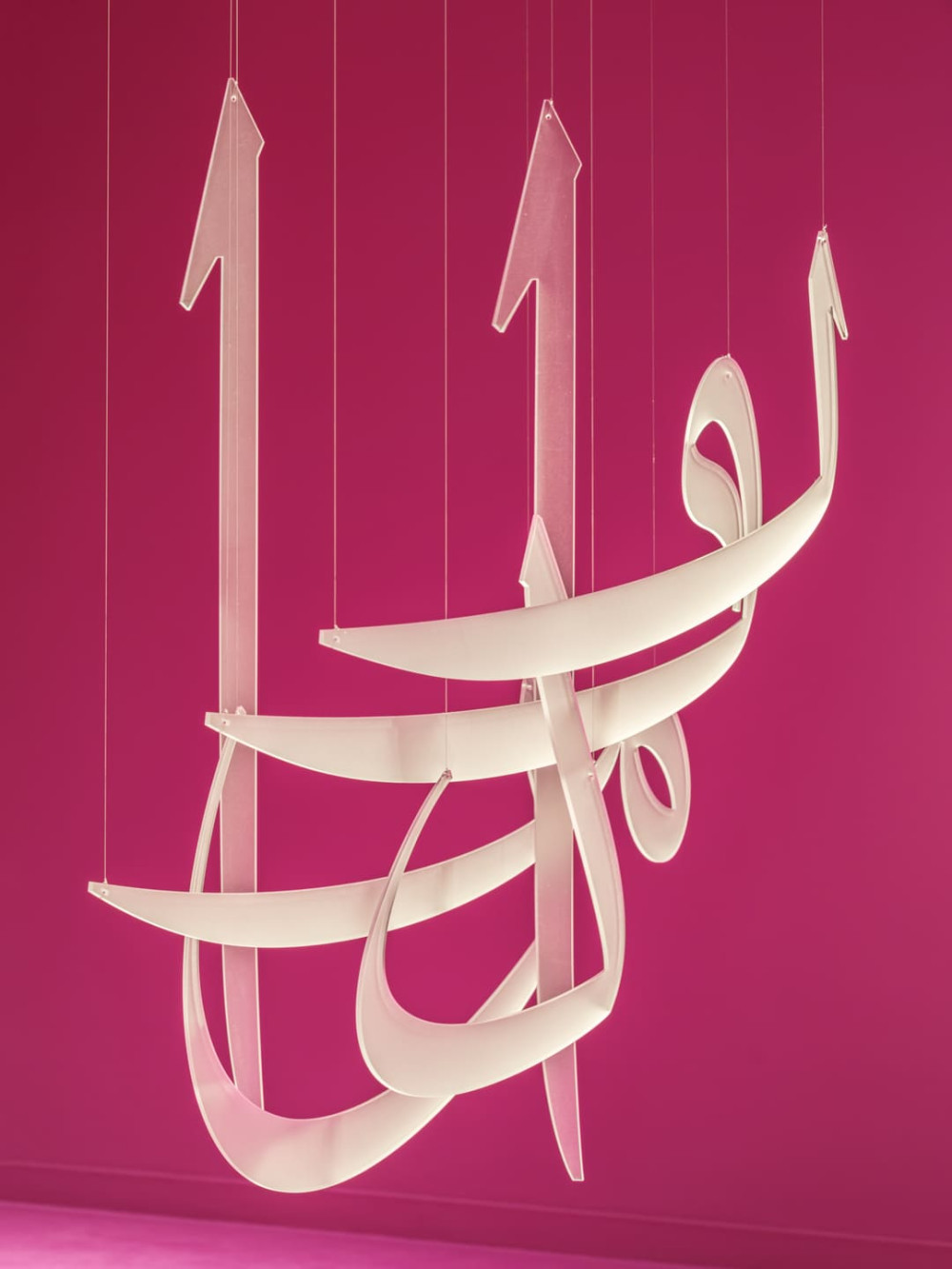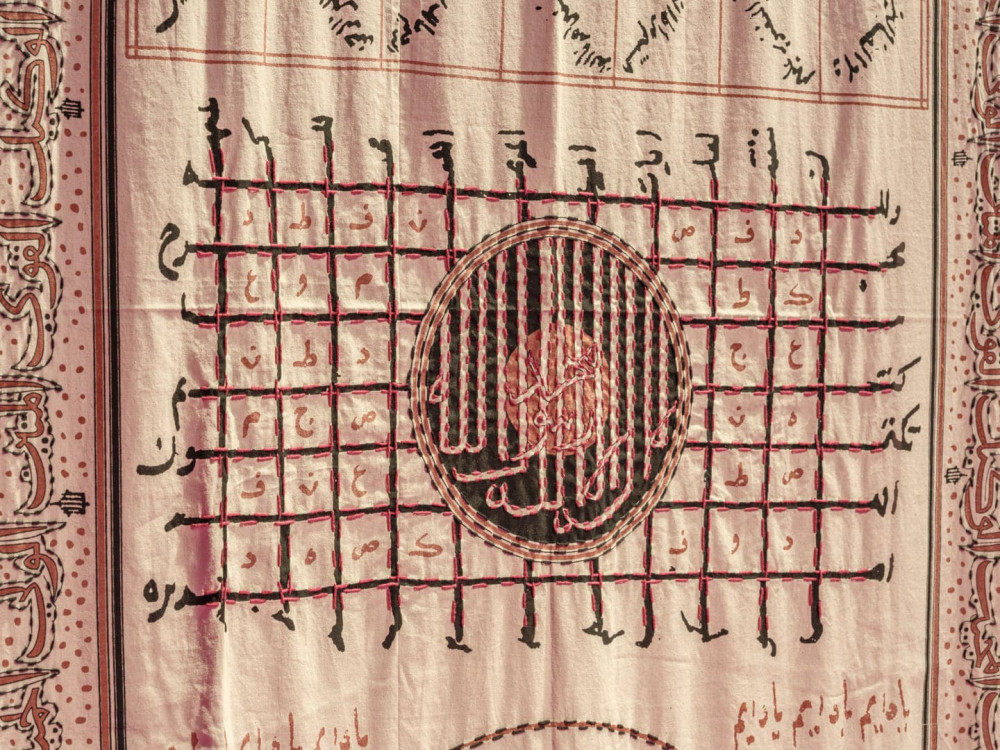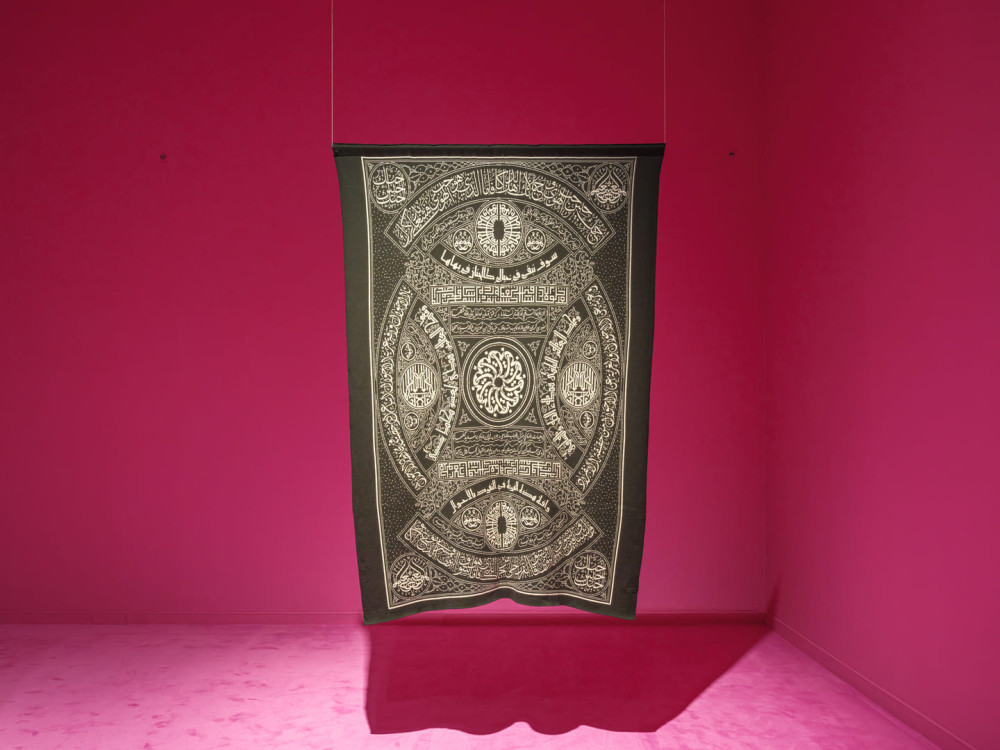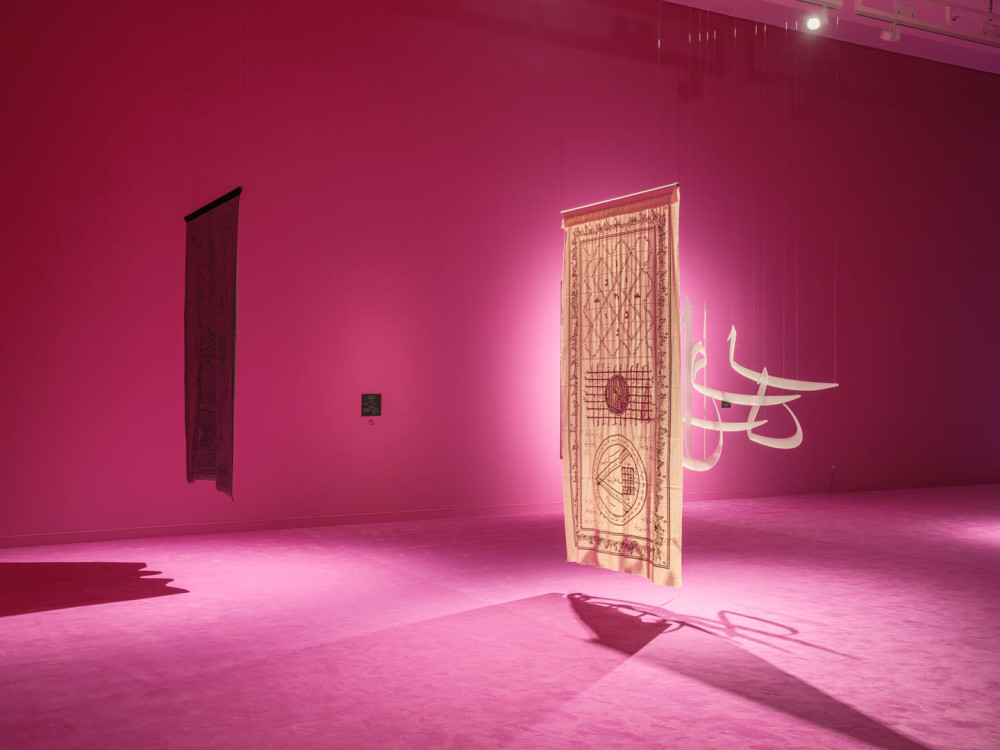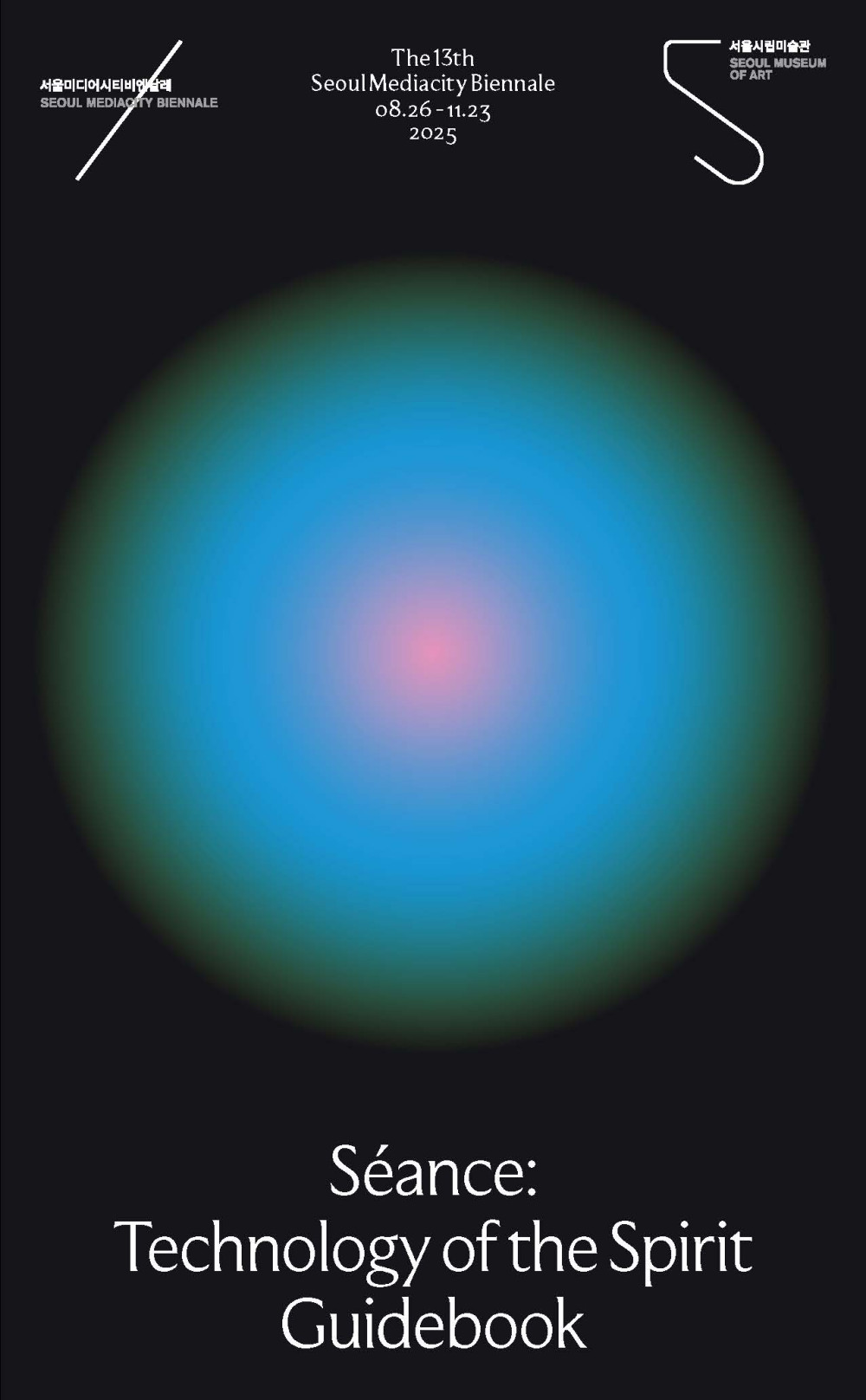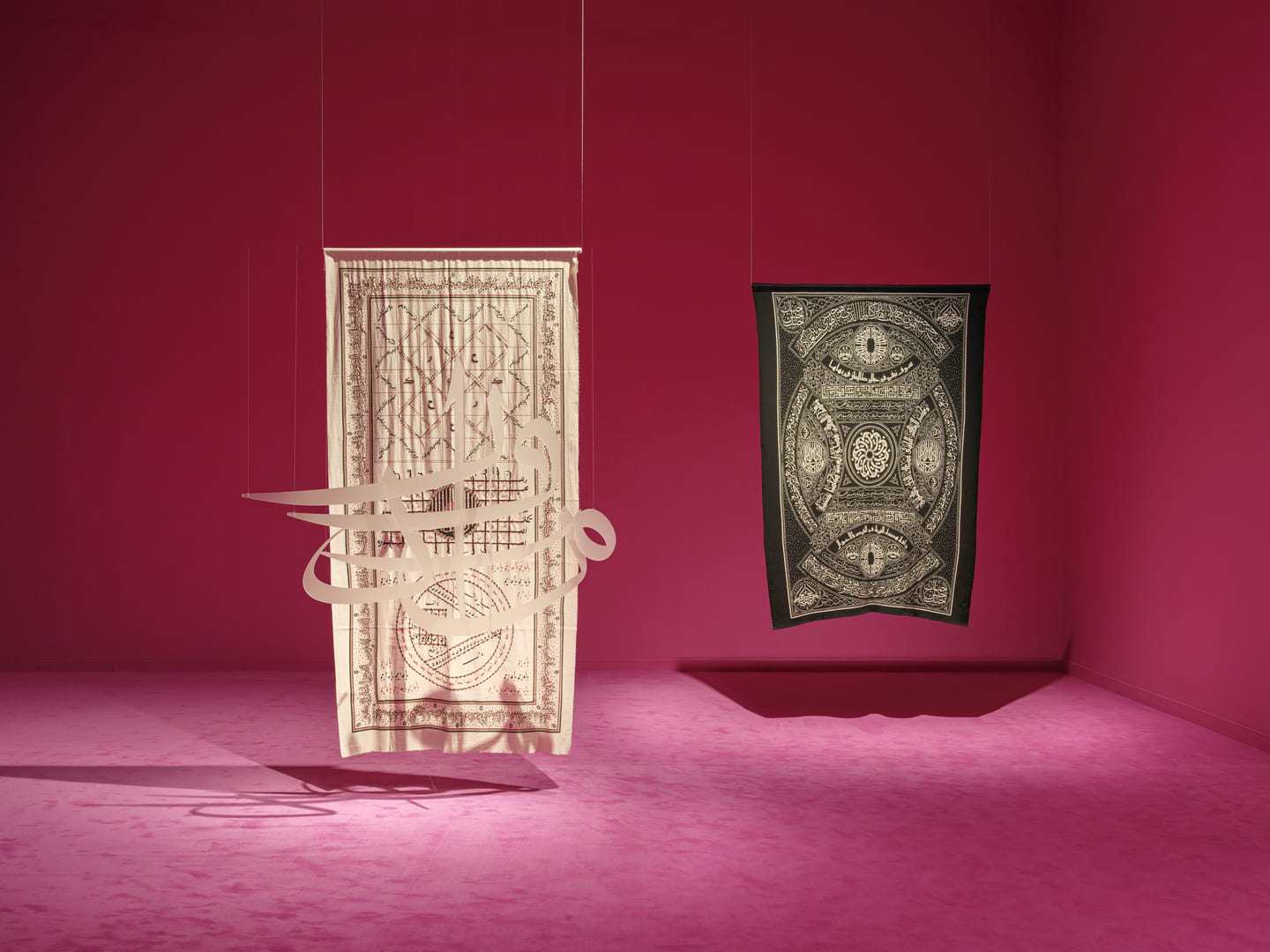
Mohamed Gaber explores the revelatory potential of Arabic letterforms. Looking beyond the traditional employment of Arabic calligraphy in religious and decorative contexts, his work reflects on the secret knowledge and suppressed histories encoded in calligraphic traditions.
Letterforms of Sorcery draws on the esoteric diagrams of a thirteenth-century compendium of occult sciences attributed to the Sufi mystic Aḥmad ibn ʿAlī al-Būnī. The banned text merges Islamic cosmology, numerology, and divine invocations into a system of mystical knowledge and ritual practice.
At the center of the piece is a magic square: a grid in which Arabic letters replace numbers according to the abjad system, in which each letter holds a numerical value. These squares functioned as talismans, encoding a metaphysical purpose—protection, healing, revelation, or the channeling of divine names. Beneath it, a circular diagram forms a cosmic seal, enclosing sacred names and geometric arrangements designed to mirror the hidden harmonies of the universe.
These forms act as visual invocations: meditative instruments as well as tools believed to hold real spiritual power. Along the borders, Qur’anic verses and the Divine Names are inscribed in stylized script, forming a protective perimeter. Each name calls forth a specific divine attribute, embedding presence and protection into the fabric of the work.
The word “Mashaq” describes the manifesto passed on by a master calligrapher to his students. Gaber’s work of the same title derives from an ongoing research project, “The Type Platform,” which studies the development of contemporary Arabic letterforms. In this example, the artist takes Sufi poems by Rabaa Al-Adawiya and Hafez Al-Shirazi on the subject of loss to reflect on the ways in which memory is passed down in written language.
Mohamed Gaber, Mashaq, 2021. knitted kashmir wool. 205 × 145 cm
Mohamed Gaber, Letterforms of Sorcery, 2022. textile and plexiglass. 242 × 120 cm (textile), dimensions variable (plexiglas). Plexiglass reproduction supported by The 13th Seoul Mediacity Biennale. Courtesy of the artist
